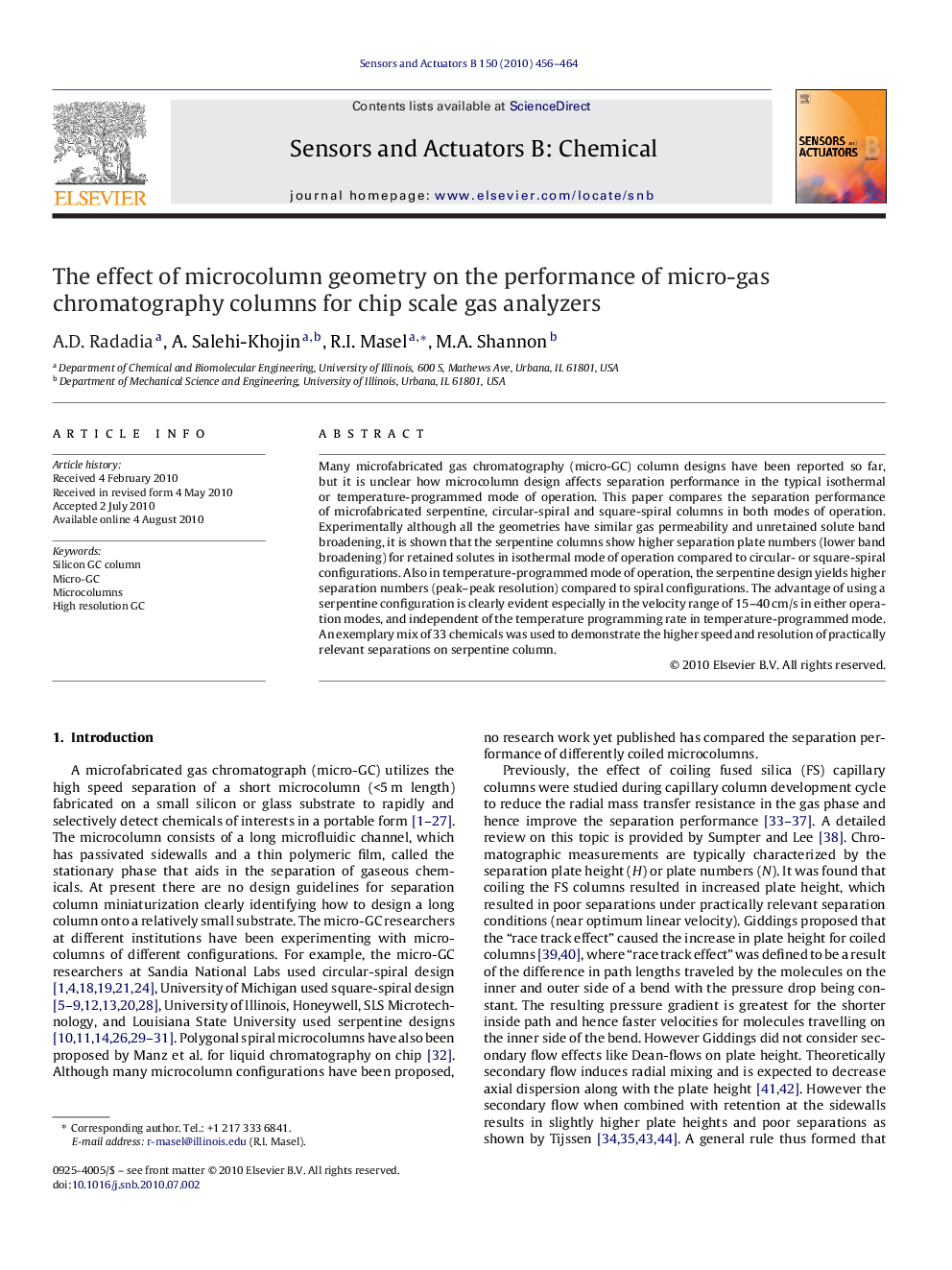| Article ID | Journal | Published Year | Pages | File Type |
|---|---|---|---|---|
| 740994 | Sensors and Actuators B: Chemical | 2010 | 9 Pages |
Many microfabricated gas chromatography (micro-GC) column designs have been reported so far, but it is unclear how microcolumn design affects separation performance in the typical isothermal or temperature-programmed mode of operation. This paper compares the separation performance of microfabricated serpentine, circular-spiral and square-spiral columns in both modes of operation. Experimentally although all the geometries have similar gas permeability and unretained solute band broadening, it is shown that the serpentine columns show higher separation plate numbers (lower band broadening) for retained solutes in isothermal mode of operation compared to circular- or square-spiral configurations. Also in temperature-programmed mode of operation, the serpentine design yields higher separation numbers (peak–peak resolution) compared to spiral configurations. The advantage of using a serpentine configuration is clearly evident especially in the velocity range of 15–40 cm/s in either operation modes, and independent of the temperature programming rate in temperature-programmed mode. An exemplary mix of 33 chemicals was used to demonstrate the higher speed and resolution of practically relevant separations on serpentine column.
